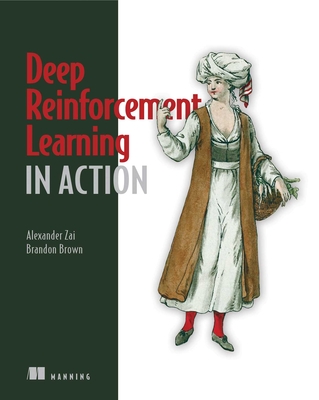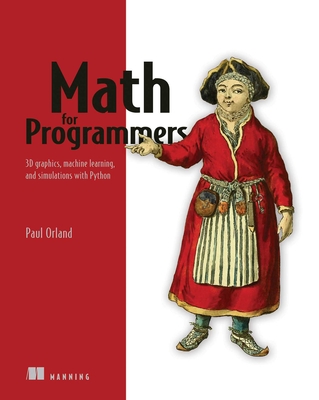Interpretable Machine Learning with Python: Learn to build interpretable high-performance models with hands-on real-world examples (Paperback)
Masís, Serg
- 出版商: Packt Publishing
- 出版日期: 2021-03-26
- 定價: $1,850
- 售價: 8.0 折 $1,480
- 語言: 英文
- 頁數: 736
- 裝訂: Quality Paper - also called trade paper
- ISBN: 180020390X
- ISBN-13: 9781800203907
-
相關分類:
Python、程式語言、Machine Learning
-
其他版本:
Interpretable Machine Learning with Python - Second Edition: Build explainable, fair, and robust high-performance models with hands-on, real-world exa
買這商品的人也買了...
-
 電腦網際網路, 6/e (國際版)(Computer Networking: A Top-Down Approach, 6/e)(附部分內容光碟)
電腦網際網路, 6/e (國際版)(Computer Networking: A Top-Down Approach, 6/e)(附部分內容光碟)$650$585 -
 Pro Oracle SQL, 2/e (Paperback)
Pro Oracle SQL, 2/e (Paperback)$2,800$2,660 -
 資料科學的商業運用 (Data science for business)
資料科學的商業運用 (Data science for business)$680$537 -
 $1,098Introduction to Computation and Programming Using Python: With Application to Understanding Data, 2/e (Paperback)
$1,098Introduction to Computation and Programming Using Python: With Application to Understanding Data, 2/e (Paperback) -
 $990Hands-On Machine Learning with Scikit-Learn and TensorFlow (Paperback)
$990Hands-On Machine Learning with Scikit-Learn and TensorFlow (Paperback) -
 Data Mining for Business Analytics: Concepts, Techniques, and Applications in R (Hardcover)
Data Mining for Business Analytics: Concepts, Techniques, and Applications in R (Hardcover)$3,950$3,753 -
 $1,188Deep Reinforcement Learning Hands-On
$1,188Deep Reinforcement Learning Hands-On -
 Hands-On Machine Learning with Scikit-Learn, Keras, and TensorFlow, 2/e (Paperback)
Hands-On Machine Learning with Scikit-Learn, Keras, and TensorFlow, 2/e (Paperback)$2,710$2,575 -
 $393深度學習的數學
$393深度學習的數學 -
 數據挖掘導論, 2/e (Introduction to Data Mining, 2/e)
數據挖掘導論, 2/e (Introduction to Data Mining, 2/e)$834$792 -
 Feature Engineering and Selection: A Practical Approach for Predictive Models (Hardcover)
Feature Engineering and Selection: A Practical Approach for Predictive Models (Hardcover)$3,370$3,202 -
 $1,805Foundations of Deep Reinforcement Learning: Theory and Practice in Python (Paperback)
$1,805Foundations of Deep Reinforcement Learning: Theory and Practice in Python (Paperback) -
 $1,628Deep Reinforcement Learning in Action (Paperback)
$1,628Deep Reinforcement Learning in Action (Paperback) -
 $2,006Math for Programmers: 3D graphics, machine learning, and simulations with Python (Paperback)
$2,006Math for Programmers: 3D graphics, machine learning, and simulations with Python (Paperback) -
 $1,421Fundamentals of Machine Learning for Predictive Data Analytics : Algorithms, Worked Examples, and Case Studies, 2/e (Hardcover)
$1,421Fundamentals of Machine Learning for Predictive Data Analytics : Algorithms, Worked Examples, and Case Studies, 2/e (Hardcover) -
 $2,024Machine Learning Design Patterns: Solutions to Common Challenges in Data Preparation, Model Building, and Mlops (Paperback)
$2,024Machine Learning Design Patterns: Solutions to Common Challenges in Data Preparation, Model Building, and Mlops (Paperback) -
 $1,248Python Machine Learning by Example : Build intelligent systems using Python, TensorFlow 2, PyTorch, and scikit-learn, 3/e (Paperback)
$1,248Python Machine Learning by Example : Build intelligent systems using Python, TensorFlow 2, PyTorch, and scikit-learn, 3/e (Paperback) -
 Deep Learning with Python, 2/e (Paperback)
Deep Learning with Python, 2/e (Paperback)$2,300$2,185 -
 Data-Driven Science and Engineering: Machine Learning, Dynamical Systems, and Control, 2/e (Hardcover)
Data-Driven Science and Engineering: Machine Learning, Dynamical Systems, and Control, 2/e (Hardcover)$2,275$2,161 -
 Generative AI with LangChain: Build large language model (LLM) apps with Python, ChatGPT and other LLMs (Paperback)
Generative AI with LangChain: Build large language model (LLM) apps with Python, ChatGPT and other LLMs (Paperback)$1,980$1,881
商品描述
Understand the key aspects and challenges of machine learning interpretability, learn how to overcome them with interpretation methods, and leverage them to build fairer, safer, and more reliable models
Key Features:
- Learn how to extract easy-to-understand insights from any machine learning model
- Become well-versed with interpretability techniques to build fairer, safer, and more reliable models
- Mitigate risks in AI systems before they have broader implications by learning how to debug black-box models
Book Description:
Do you want to understand your models and mitigate risks associated with poor predictions using machine learning (ML) interpretation? Interpretable Machine Learning with Python can help you work effectively with ML models.
The first section of the book is a beginner's guide to interpretability, covering its relevance in business and exploring its key aspects and challenges. You'll focus on how white-box models work, compare them to black-box and glass-box models, and examine their trade-off. The second section will get you up to speed with a vast array of interpretation methods, also known as Explainable AI (XAI) methods, and how to apply them to different use cases, be it for classification or regression, for tabular, time-series, image or text. In addition to the step-by-step code, the book also helps the reader to interpret model outcomes using examples. In the third section, you'll get hands-on with tuning models and training data for interpretability by reducing complexity, mitigating bias, placing guardrails, and enhancing reliability. The methods you'll explore here range from state-of-the-art feature selection and dataset debiasing methods to monotonic constraints and adversarial retraining.
By the end of this book, you'll be able to understand ML models better and enhance them through interpretability tuning.
What You Will Learn:
- Recognize the importance of interpretability in business
- Study models that are intrinsically interpretable such as linear models, decision trees, and Na ve Bayes
- Become well-versed in interpreting models with model-agnostic methods
- Visualize how an image classifier works and what it learns
- Understand how to mitigate the influence of bias in datasets
- Discover how to make models more reliable with adversarial robustness
- Use monotonic constraints to make fairer and safer models
Who this book is for:
This book is for data scientists, machine learning developers, and data stewards who have an increasingly critical responsibility to explain how the AI systems they develop work, their impact on decision making, and how they identify and manage bias. Working knowledge of machine learning and the Python programming language is expected.










